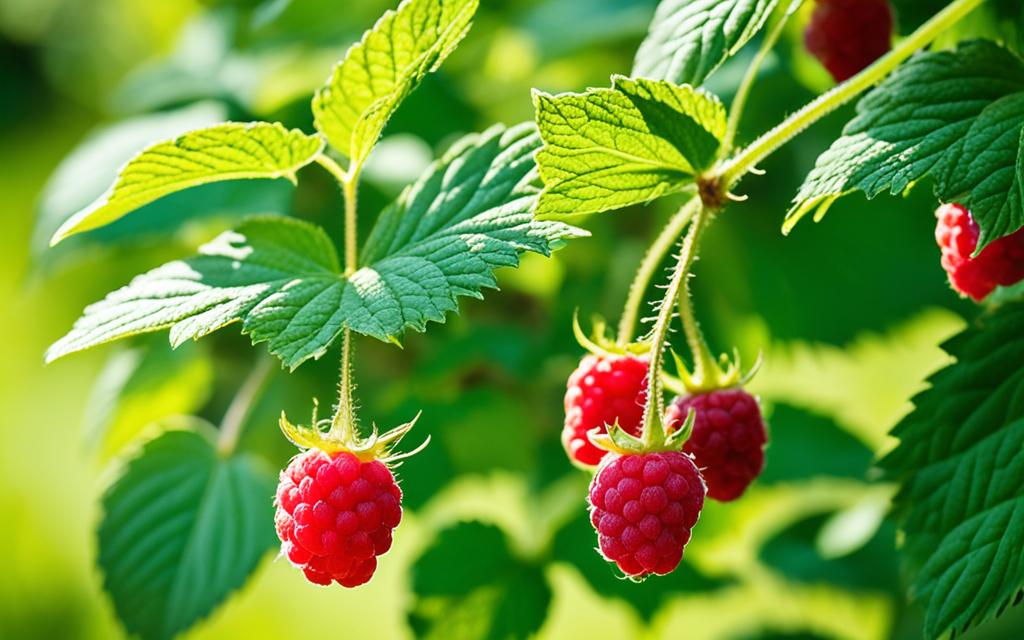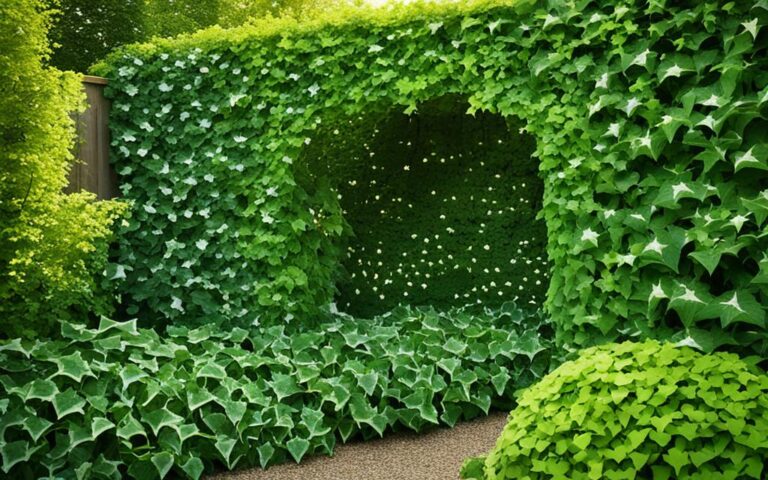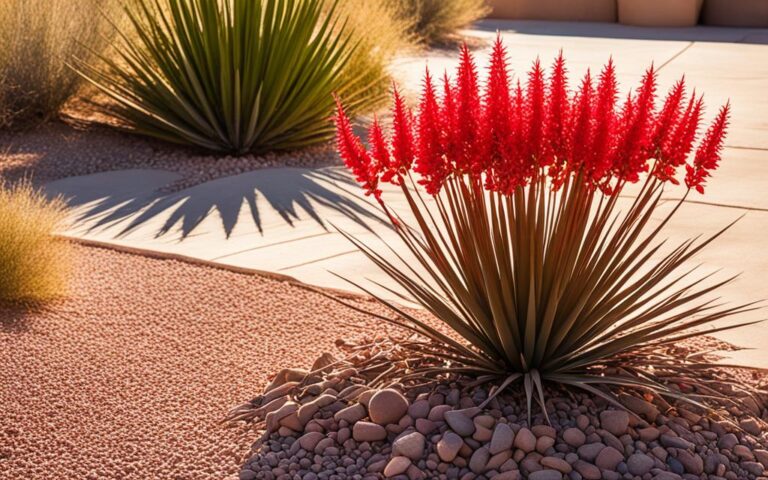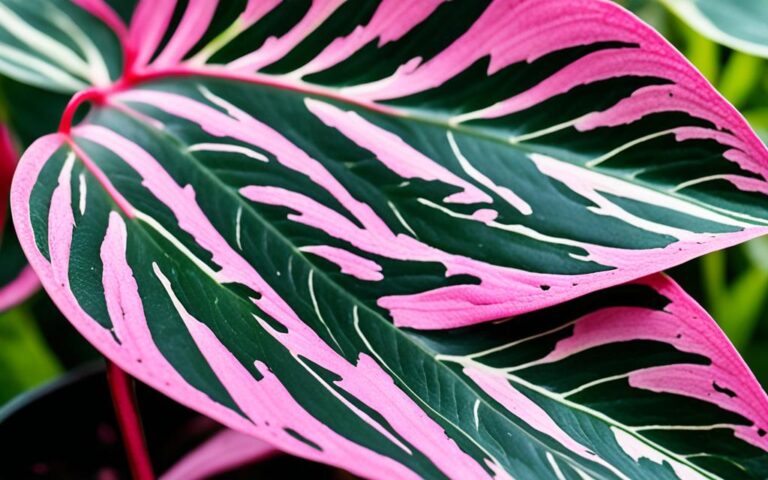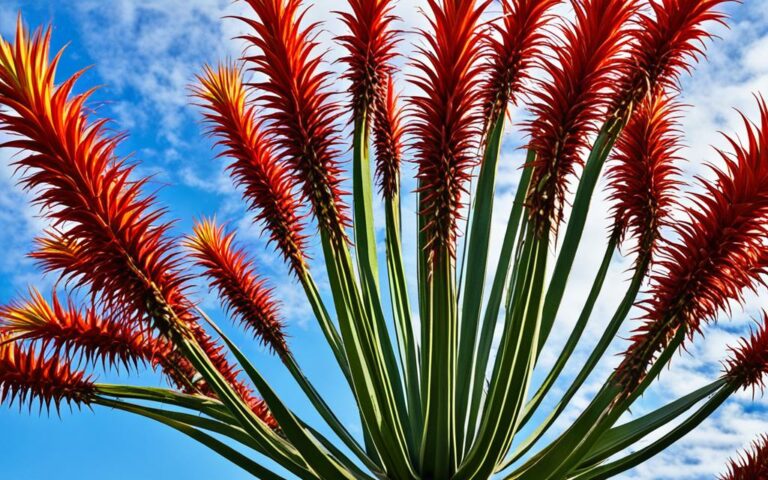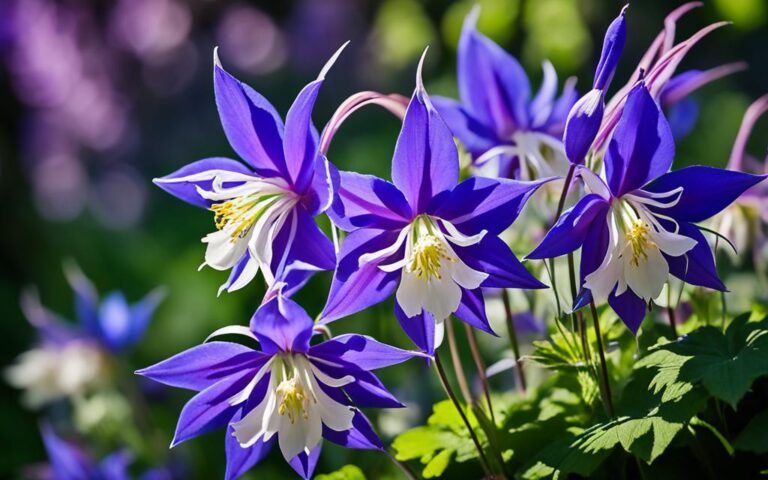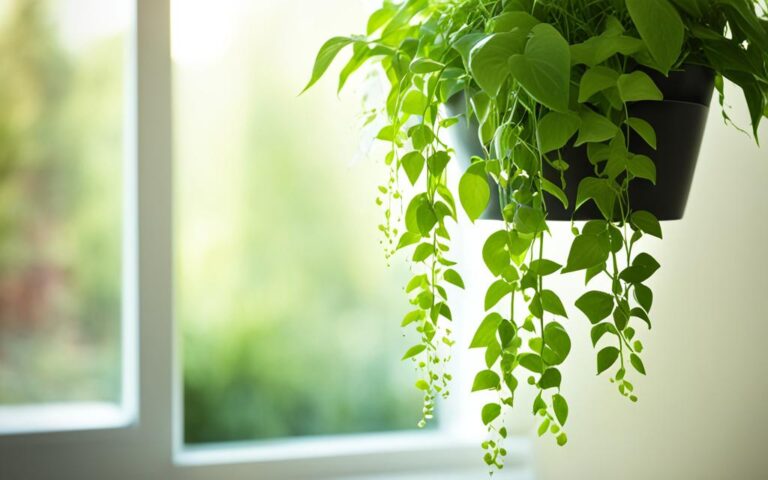Growing Healthy Raspberry Plants: Tips and Tricks
Raspberries are a favorite fruit that can do well in many parts of the United States. But, not many know how great these plants can be. They need full sun to grow best, making them perfect for gardeners and small farmers.
This article will give you expert advice on growing raspberry plants. You’ll learn how to pick the best varieties and care for them. You’ll also get tips on how to harvest them properly.
If you’re new to gardening or already love it, this guide is for you. It covers the importance and special traits of raspberries. You’ll learn about the different types and what they need to grow well.
Key Takeaways
- Raspberries can be grown successfully in most areas of the United States, with the right conditions.
- Proper plant selection, planting, and care techniques are crucial for a bountiful raspberry harvest.
- Understanding the different types of raspberries and their unique characteristics can help you choose the best varieties for your climate and gardening goals.
- Providing the right amount of sunlight, water, and nutrients is essential for maintaining healthy raspberry plants.
- Pruning and training techniques can optimize the productivity and longevity of your raspberry plants.
Introduction to Raspberry Plants
Raspberry plants (Rubus spp.) are part of the Rosaceae family. They are known for their tasty, nutritious berries. These plants are a favorite among gardeners and small farmers. They are easy to grow, produce a lot, and are useful in cooking and medicine.
Importance and Popularity
Raspberries are full of antioxidants, vitamins, and fiber. This makes them a great choice for a healthy diet. In the U.S., 75% of raspberries grown are red. Washington, Oregon, and California lead in raspberry production, with over 20,000 acres of farms.
Northeastern states also play a big role, with about 1,600 acres of raspberries on more than 2,300 farms.
Interesting Facts
- Raspberry plantings can fruit for at least five years and occasionally produce for more than ten years.
- Red raspberries were introduced to the United States as early as 1771.
- The Northwest commercial crop of black raspberries is predominantly the ‘Munger’ cultivar, released in 1890.
- Purple raspberries are a hybrid between black and red raspberries.
- Raspberry plants are susceptible to diseases like Raspberry bushy dwarf virus (RBDV).
Raspberries come in red, black, purple, and yellow, each with its own taste. They have a long history, dating back to ancient Rome.
| Metric | Value |
|---|---|
| Fresh-market raspberry prices | $1.50 per pound to $5.00 per half-pint clamshell |
| Processed raspberry prices | One-third to one-half the price of fresh-market berries |
| Summer-bearing raspberry fruiting season | Mid-summer |
| Everbearing raspberry fruiting season | Late August |
Types of Raspberry Plants
The world of raspberry plants is full of variety, with many species and varieties to choose from. Whether you’re experienced or new to gardening, knowing the different types of raspberries can help you pick the best ones for your garden and taste preferences.
Common Species and Varieties
Popular raspberry species include red, black, purple, and yellow types. Red raspberries, like Boyne, Killarney, and Latham, are loved for their bright color, sweet-tart taste, and toughness. Black raspberries, with varieties like Black Hawk and Bristol, have a deep flavor and are great for jams and desserts. Purple raspberries, such as Royalty, mix red and black raspberries for a unique look and taste. Yellow raspberries, including Anne and Fallgold, are sweet and milder than red ones.
Unique Characteristics
- Raspberry varieties ripen at different times, from early to late, giving gardeners a long harvest season.
- Some raspberries, like Autumn Bliss and Polana, can handle the heat better, making them good for warm areas.
- Some types, including Heritage and Cascade Delight, fight off diseases like phytophthora root rot better.
- The taste, size, and how long they last can all be different among raspberry varieties.
With so many raspberry species and varieties, gardeners can find the unique characteristics of each to match their garden and taste.
Raspberry Plant Anatomy
Raspberry plants have a special anatomy that helps them grow and produce fruit. Their leaves are compound, with 3-5 dark green leaflets and slightly serrated edges. The stems, or canes, start as green in the first year and turn woody and brown in the second year.
The flowers of raspberries are beautiful, with delicate white or light pink petals in clusters along the canes. These plants grow in a biennial cycle. In the first year, the primocanes focus on leaves and roots. In the second year, the floricanes produce fruit before dying back.
Special Features
This growth cycle is key to pruning and managing raspberry plants. Knowing about the raspberry plant anatomy, including raspberry leaves, raspberry stems, and raspberry flowers, helps gardeners keep their plants healthy and productive.
| Raspberry Plant Feature | Description |
|---|---|
| Leaves | Compound, with 3-5 dark green leaflets and slightly serrated edges |
| Stems (Canes) | Green primocanes in the first year, turning woody and brown in the second year as floricanes |
| Flowers | White or light pink, with five petals, appearing in clusters along the canes |
| Growth Habit | Biennial, with primocanes producing leaves and roots in the first year, and floricanes bearing fruit in the second year before dying back |
Understanding the unique anatomy of raspberry plants is key to growing these berries successfully.
Ideal Growing Conditions for Raspberry Plants
Raspberry plants do best in certain conditions to grow well and produce lots of fruit. To grow a successful raspberry patch, it’s important to know about the plant’s light, temperature, humidity, soil, and watering needs.
Light, Temperature, and Humidity Requirements
Raspberries love a lot of sunlight, needing 6-8 hours of direct sunlight each day. They can handle some shade, but they’ll produce less fruit. The best temperature for raspberries is between 70-85°F when they’re growing.
Raspberries also like good air flow to avoid diseases. This means they do well in places with good ventilation.
Soil and pH Needs
Raspberries like soil that drains well and is full of nutrients. The soil should be a bit acidic, with a pH between 5.5-6.5. This kind of soil helps the plants grow strong and healthy.
Watering Requirements
Raspberries need steady moisture because they have shallow roots and can dry out easily. They should get 1-1.5 inches of water every week when they’re growing. This keeps them healthy and helps them produce lots of fruit.
| Raspberry Growing Condition | Ideal Range |
|---|---|
| Light Requirement | 6-8 hours of direct sunlight per day |
| Temperature Range | 70-85°F during the growing season |
| Soil pH | 5.5-6.5 |
| Watering Needs | 1-1.5 inches of water per week during the growing season |
By keeping the right conditions for raspberry plants, growers can make sure their plants stay healthy and productive. This leads to lots of raspberries every year.
Propagating Raspberry Plants
Raspberry plants can be easily spread through raspberry propagation, raspberry cuttings, and raspberry division. These methods help gardeners grow more plants or share them with others.
Softwood cuttings are a top choice. They come from the current season’s growth in early summer. After rooting in a good soil mix, they can be moved to a new spot.
Root division is another great way to spread raspberries. It involves cutting the plant’s underground stems, or stolons, and replanting them.
Layering is a good method too. It means bending and burying a part of a primocane. This buried part will grow roots and can be separated later.
It’s important to give new raspberry plants the right soil, water, and sunlight. With good care, gardeners can enjoy lots of raspberries for many years.
Care and Maintenance
Proper raspberry care and maintenance are key for your berry patch’s health and yield. Using the right raspberry pruning and training techniques can boost your harvest. It’s also vital to watch out for raspberry pests and diseases to keep your plants healthy.
Pruning and Training Techniques
Pruning is crucial for raspberry plants. For summer-bearing raspberries, cut last year’s fruiting canes to the ground after harvest. Thin new primocanes to 3-4 per foot. Fall-bearing types should be pruned in early spring to encourage a single big crop.
Correct raspberry training helps control growth and boosts harvests. Training bushes along fences or trellises makes upkeep and picking easier.
Pests and Diseases
Raspberries face threats from pests like spider mites, Japanese beetles, and raspberry borers. They can also get diseases such as anthracnose and botrytis. Using pest management and organic or low-toxicity raspberry pesticides can help control these problems.
Fertilizers and Pesticides
Early spring fertilization with a balanced, slow-release raspberry fertilizer supports your plants’ health and productivity. When fighting pests or diseases, choose organic or low-toxicity raspberry pesticides to protect the environment and keep your berries safe.
By following these raspberry care tips, your plants will thrive, giving you a great harvest every year.
Raspberry Plants Benefits
Growing raspberry plants in your garden is great for gardeners and homeowners. These fruits are packed with antioxidants, vitamins, and fiber. They’re perfect for eating fresh, freezing, or adding to recipes like jams, pies, and smoothies.
Raspberries are also good for your health. They may help prevent some cancers and support heart health. The antioxidant zeaxanthin can protect your eyes from age-related problems.
Raspberry plants make your garden look nice with their pretty leaves and flowers. Growing your own raspberries can make you feel proud and is fun for all gardeners.
| Raspberry Health Benefits | Raspberry Culinary Uses | Raspberry Medicinal Uses |
|---|---|---|
|
|
|
The raspberry plant is great for many things. You can enjoy it as a snack, use it in cooking, or even as a natural remedy.
Site Selection and Preparation
Choosing the right spot is key for growing healthy raspberry plants. They love full sun, so pick a spot that gets 6-8 hours of sunlight daily. Good air flow is also important to stop moisture from building up and to fight off diseases.
Raspberries do well in soil that drains well and is rich in nutrients. The soil should be a bit acidic, with a pH of 5.5-6.5. To get the soil ready, mix in compost or well-rotted manure to boost organic matter and drainage. Don’t plant raspberries where tomatoes, potatoes, or strawberries grew before to avoid diseases.
Choosing the Right Location
- Raspberry plants need full sun, at least 6-8 hours of direct sunlight per day.
- Make sure the area has good air flow to prevent moisture buildup and reduce disease risk.
- The southern US is great for growing raspberries and blackberries, with climates suitable for them from sea level to 3,000 feet high.
- Raspberries love long growing seasons and mild summers, perfect for the Appalachian Mountains at 2,000 to 3,000 feet high.
Preparing the Soil
- Raspberries do best in well-drained, rich soil that’s a bit acidic, with a pH of 5.5-6.5.
- Add compost or well-rotted manure to the soil to increase organic matter and help with drainage.
- Don’t plant raspberries where crops like tomatoes, potatoes, or strawberries grew before to avoid diseases.
- Good soils for raspberries and blackberries are rich in organic matter (>2%) and have a pH of 6.0 to 6.5.
Choosing and preparing the perfect spot is crucial for growing healthy, productive raspberry plants.
Planting Raspberry Plants
Proper planting is key for a great raspberry harvest. You need to think about spacing and depth. For red and yellow raspberries, plant them 2-3 feet apart. Black and purple raspberries need about 4 feet of space between each plant. Make sure the crown, where roots and stems meet, is 1-2 inches above the soil.
It’s also important to give your raspberry canes a good support system. A simple trellis with posts 5-8 feet apart and wires for the plants to grow on works well. This setup keeps the plants upright and makes picking easier. It also stops the canes from getting too heavy and falling over.
- Space red and yellow raspberry plants 2-3 feet apart
- Space black and purple raspberries 4 feet apart
- Plant the raspberry crown 1-2 inches above the soil surface
- Use a post-and-wire trellis system for optimal raspberry support
By planting and supporting your raspberry bushes right, you’ll get a big and lasting harvest. With the right raspberry planting methods and support, your raspberries will do great for years.
Watering Raspberry Plants
Watering raspberries right is key to their health and how much they produce. They need 1-1.5 inches of water each week from spring to harvest’s end. Since their roots are shallow, they can’t handle too little or too much water.
To keep them moist, use drip irrigation or a soaker hose. This cuts down on wasted water. Check the soil often and water when the top inch feels dry. Don’t overwater in winter to stop root rot.
On average, raspberries need about an inch of rain every 7 to 10 days in the growing season. Adjust how often you water based on the weather, soil, and local water rules.
| Raspberry Plant Watering Requirements | Quantity |
|---|---|
| Water Needed per Week (During Growing Season) | 1-1.5 inches |
| Typical Rainfall Frequency | Every 7-10 days |
| Optimal Watering Depth | 1-2 inches |
Don’t overwater raspberries. Too much water can hurt them more than too little. Follow local rules on water use to water your raspberry plants right.
“Watering raspberry plants should be done efficiently, allowing the water to soak around the root zone to ensure it reaches the roots rather than running off over the soil surface.”
Fertilizing Raspberry Plants
Proper fertilization is key for your raspberry plants’ health and productivity. In early spring, before growth starts, use a balanced, slow-release fertilizer like 10-10-10 or 12-12-12. This gives them steady raspberry nutrients for foliage, roots, and fruit growth.
Adding organic stuff like compost or manure to the soil helps with raspberry fertilizing and makes the soil better. But don’t overdo it with the fertilizer, as too much nitrogen can make more leaves and less fruit. Stop fertilizing in mid-summer to let the plants rest. Regular, balanced feeding means more raspberries every year.
- Stark® Raspberry Food is a balanced 20-21-20 formula recommended to strengthen roots and enhance fruit production in raspberry plants.
- Fertilizers can be synthetic or organic and are labeled with a “guaranteed analysis” of nutrients like Nitrogen (N), Phosphate (P), and Potash (K).
- Recommendations include fertilizing raspberry plants as soon as the soil is workable in early spring and stopping by July 1 to prevent potential plant injury.
Conducting soil testing prior to applying fertilizers is advised to identify any nutrient deficiencies that may affect raspberry plant growth.
Organic stuff like compost and manure can add to raspberry nutrients. Raspberries need a yearly feed for good growth and lots of fruit in late winter or early spring.
“Correctly fertilizing raspberries can help keep them strong and healthy, reducing the likelihood of succumbing to diseases or pests.”
Pruning Raspberry Plants
Proper pruning is key for keeping raspberry plants healthy and productive. The way you prune depends on the type of raspberry. For summer-bearing raspberries, cut the canes that had fruit last year to the ground right after you pick the berries. Then, thin the new canes to 3-4 per foot to help air and light get through.
Fall-bearing raspberries need different pruning. Cut all canes down in early spring to get a big crop in the fall. It’s important to remove weak, damaged, or sick canes to help healthy ones grow.
When pruning raspberries, the right techniques are vital. Pruning keeps the plant in check, improves fruit quality, and stops pests and diseases from taking over.
Pruning Recommendations
- Red raspberries produce suckers at the base of previous season’s growth, while black (and purple) form on new growth.
- Everbearing raspberries produce two crops, summer and fall.
- Summer crops produce fruit on the previous season’s (fall) canes, which can be removed after the summer harvest and again in spring.
- Fall-bearing types produce on first year’s canes and are thus pruned back after the late fall harvest when dormant.
Cane Management
- For red raspberry bushes, it is recommended to leave 10 to 12 of the healthiest canes, about ¼ inches (0.5 cm.) in diameter, with 6-inch (15 cm.) spacing.
- Black or Purple Raspberry Bushes are pruned by removing fruiting canes after harvest and tip pruning new shoots in early spring 3 to 4 inches (8-10 cm.) to encourage branching.
- Annual dormant pruning is required for both primocane and floricane-fruiting raspberries.
Trellising is often used for raspberries in high tunnels to improve light and air flow. This helps reduce disease and pests. Primocane-fruiting raspberries are easy to prune by cutting canes to the ground in late fall or early spring. Floricane-fruiting raspberries need more pruning but are still manageable.
“Rotating cross-arm trellises” are used for raspberries and blackberries. They help adjust the angle of canes and berries for easier picking.
Harvesting Raspberry Plants
Harvesting ripe raspberry plants is a rewarding experience for home gardeners. Raspberries are ready for raspberry picking in mid-summer for summer-bearing types and late summer to early fall for fall-bearing ones. They should be picked when fully colored and come off the plant easily with a gentle tug.
It’s best to harvest raspberries in the morning. This is when the fruits are cooler and less likely to get damaged or spoiled. Unwashed, freshly picked raspberries can stay fresh in the fridge for 3-5 days. Regular harvesting helps you enjoy your fruits and keeps the plants producing well throughout the season.
Raspberries come in ‘summer-fruiting’ and ‘autumn-fruiting’ types. Summer-fruiting raspberries fruit on the previous year’s growth. Autumn-fruiting ones fruit on this year’s growth. These plants can keep producing for 10 years or more, giving you a lot of raspberries every year.
- Recommended spacing for planting raspberry canes is 45cm apart, with 1.8m between rows.
- Raspberries are more tolerant of shade but will taste sweeter in a sunny location.
- Summer-fruiting raspberries need support, while autumn-fruiting varieties usually don’t require support.
Proper raspberry harvesting techniques are key to keeping your plants healthy and productive. By following these guidelines, you can have a delicious and sustainable raspberry harvest for years to come.
“Raspberries are one of the most rewarding fruits to grow in the home garden. With proper care and attention, they can provide a bountiful harvest season after season.”
Conclusion
Growing your own raspberry plants is a rewarding and tasty project for raspberry gardeners at any level. This article has given you tips and techniques to help you grow thriving raspberry plants. You’ll learn how to pick the best varieties, plant, care for, and prune them for a great harvest.
Whether your garden is big or small, adding raspberry plants can make your space look great and give you a healthy snack. With the right knowledge and effort, you can enjoy the amazing taste of raspberries you grow yourself for many years.
For a successful raspberry growing experience, focus on watering them well during hot weather. Also, learn about the different raspberry varieties to keep your plants healthy and productive. This article has given you the tools you need to start your raspberry growing journey and enjoy a big harvest.
